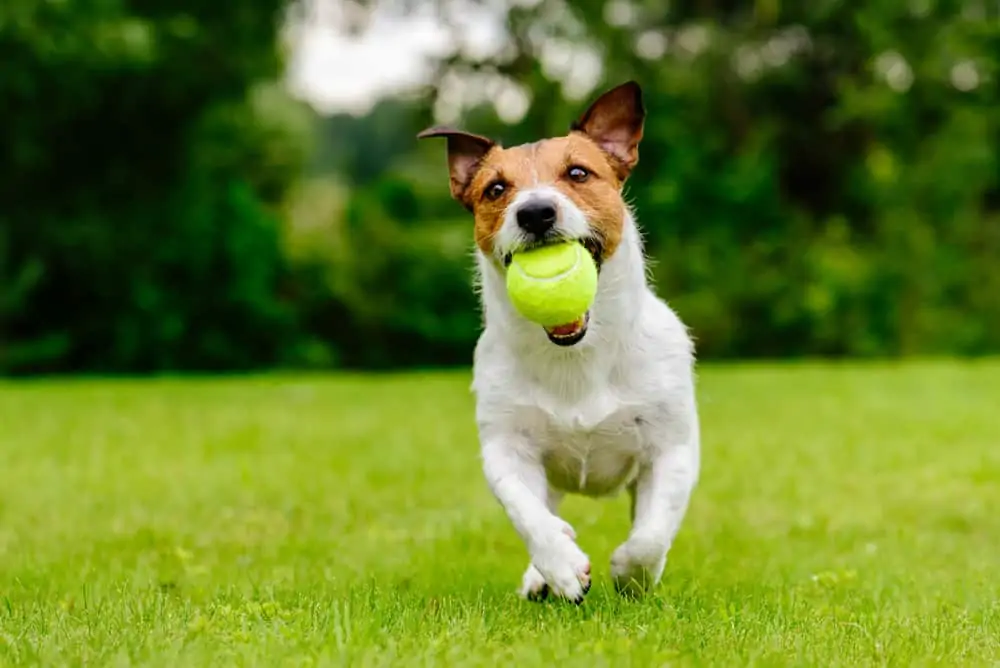Maintaining a beautiful and perfectly manicured lawn is important, but taking care of our furry friends is imperative if we don’t want to make them sick, or worse, lose them.
A general rule of thumb is that you should wait at least 24-72 hours before allowing any animals to roam on your lawn, or anywhere near it really. This ensures that the lawn treatment has had plenty of time to dissipate.

Whilst the majority of pesticides, fungicides and other treatments might advise on their labels that 6-12 hours is enough time to wait, it’s best to err on the side of caution. Always follow their other instructions to the letter, though!
A study conducted in 2013 indicated that chemicals appear to linger on surfaces they were sprayed at for 48 hours at a time. We are of the opinion that it is always better to be safe than sorry, so if you’re worried, then wait.
At the end of the day, your animal’s health is more important than convenience.
Table of Contents
Is Immunox Safe For Dogs?
Only when completely dry!
As a chemical, it poses risks to the health of dogs and humans, and all contact with it should be avoided. You should not apply the product to anything in a way that results in direct or indirect contact with adults, children or pets, in any circumstance.
As a result, you should not allow anybody – animals or otherwise – to have contact with the treated area or plants until the spray has completely dried. Side effects range from irritation to death, so it’s incredibly important that this is adhered to.
Just like we’ve explained above, the majority of manufacturers would suggest their product would be fully dry in around 6-12 hours. However, to stay on the safe side, we’d highly recommend sticking to between 24 and 48 hours.
However, this doesn’t mean you can’t use it altogether: just be sure to adhere to every guideline and make sure your furry friend doesn’t run onto the lawn in excitement before it’s totally bone dry!
Is Lime On Grass Bad For Dogs?
Not inherently, but you need to be careful. Many lawn lovers swear by a coat of lime on their garden soil, increasing the pH level to ensure that their plants get all of the nutrients needed to thrive.
Either in the form of a lime pellet or literal limes, using these on your lawn is generally considered to be safe for canines, so long as you take some precautions. The first of which being: never to use quick or caustic lime.
Although these get the job done faster, it has a tendency to irritate the skin of humans and pets alike, so unless you’re willing to keep your dog off the grass for a couple of days, you should steer clear of the heavy-duty stuff.
However, powdered lime made from calcium or other materials might be non-toxic, but they aren’t totally safe for your pup. Sure, they won’t get seriously ill, or die, but it could irritate the eyes, skin and lungs of your canine companion.
As such, once the lime dust or pellets have been spread, you should ensure they are completely absorbed by the soil before you or your dog comes into contact with it. Watering thoroughly or allowing a huge rainstorm to drench your lawn first is best.
This ensures that the lime is either completely integrated or in such a small concentration that the risk of ingestion, inhalation or skin contact is very much reduced for your dog.
Is Spectracide Harmful To Dogs?
Not once dried, but definitely whilst wet! As an insecticide, it can result in respiratory or nerve damage when your dog is exposed to it, especially for longer periods – it could affect a number of their organs, having serious consequences.
Potential side effects of contact with a spectracide include vomiting, diarrhea, convulsions, blacking out and even falling into a coma. That goes for you and your furry friend, so it really isn’t worth it to mess around or take any risks.
Only once the spray has completely dried will it be safe to allow your dog to roam free on the lawn once more. The time this takes will depend on several factors – not to repeat ourselves, but you really ought to wait at least 24-48 hours.
It might feel dramatic, but this will make sure there are zero harmful traces around to harm your dog. Taking precautions is a whole lot easier than spending thousands on vet fees and coming to terms with the fact you made your own dog sick.
As soon as everything is fine, your pooch is free to walk around as normal – just be sure to wait long enough!
Will TruGreen Hurt My Dog?
If they come into contact with its chemicals, yes! The chemicals in the products that TruGreen use are toxic to humans AND animals, so it’s incredibly important that you allow your lawn to dry totally before allowing any people or pups to frolic on it.
We’ve already provided the scientific evidence above, but it’s worth reminding you: it can take up to 48 hours for pesticides, insecticides or fungicides to totally dry. Even if the grass looks or feels dry to you, that doesn’t mean all of the chemicals are gone.
That being said, as long as you allow enough time between the TruGreen treatment and your dog running around (or peeing on…) your lawn, there’s no reason that they should succumb to any side effects afterward.
If your neighbor has had TruGreen visit, and it’s a particularly windy day, you should take caution allowing your dog to hang out in the yard, as it’s possible that some of the chemicals could have transferred.
When you’re worried about your pup and not sure how long it was since you applied the fertilizer (we’re talking days here, not hours) it can be helpful to blast your lawn with the hose to remove any lingering traces, just in case.

